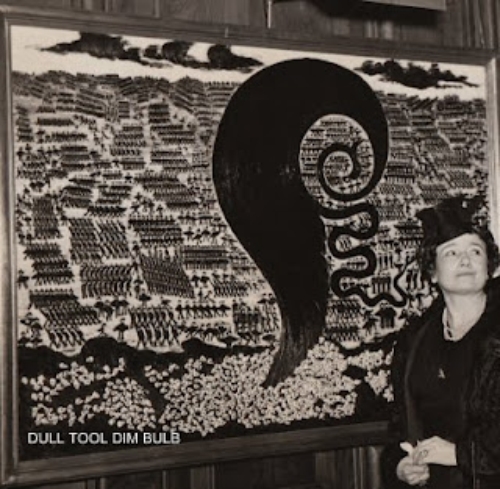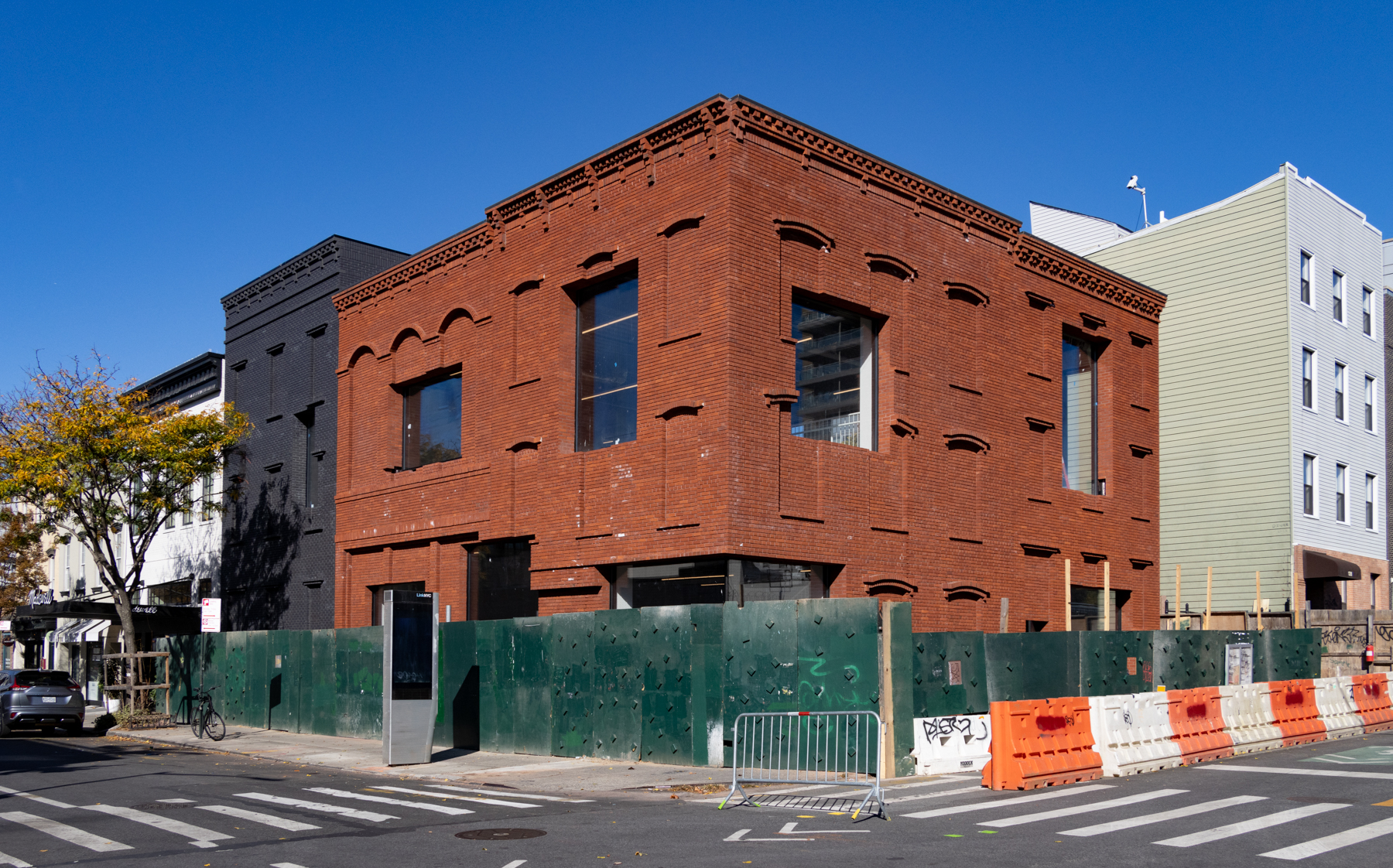Walkabout: The Bushes and Brooklyn’s Industry City, Part 4
Read Part 1, Part 2, Part 3, Part 5 and Part 6 of this story. In 1930, when the country was entering the Great Depression, millionaire Irving T. Bush, the founder of the massive Bush Terminal complex in Sunset Park, Brooklyn, made headlines. It wasn’t because of Bush Terminal, which was still Brooklyn’s largest employer,…

Read Part 1, Part 2, Part 3, Part 5 and Part 6 of this story.
In 1930, when the country was entering the Great Depression, millionaire Irving T. Bush, the founder of the massive Bush Terminal complex in Sunset Park, Brooklyn, made headlines. It wasn’t because of Bush Terminal, which was still Brooklyn’s largest employer, despite the worsening hard times, and it wasn’t because of his two yachts, and his love for sailing, a hobby he had inherited from his father, Rufus T. Bush. Irving T. Bush was on the front page of the New York Times because of a Bowery breadline and a new wife, whom he had met in that very same Bowery soup kitchen. A millionaire, mentioned in the very first Forbes “Rich List” in 1918, and a Bowery bread line? That was news, but it was the woman he married that made it a headline.
The story of the Bush family, whose forbearers came to this country as the Bosch’s of Holland, is an American success story, a very New York success story. Irving T’s father, Rufus T. Bush, made a tidy fortune from oil and the subsequent sale of his oil refinery to Standard Oil, in the late 1800s. For that part of the story, please read Part One. His son, Irving T. Bush, founded the Bush Terminal industrial complex on the site of his father’s oil refinery, in Sunset Park. His story, and the history of this terminal, up until the Depression, can be found in Parts Two and Three.
By 1930, Irving had been married twice. He and his first wife, Belle Barlowe, had two daughters before they divorced. He married again, this time to Maud Beard, who gave him a son, whom he named Rufus, after his father. Their marriage was destined to fail as well. Irving Bush was probably not an easy man to live with. In the 1920’s, on a trip through the Bowery, he met a woman who would change his life, and he would change hers. Her name was Flora Marian Spore, and she was a dentist, an artist, philanthropist, and the love of Irving Bush’s life.
Flora Marian Spore was a fascinating woman. She was born in 1878, grew up in the Great Lakes Bay section of the state, and after graduating from the University Of Michigan College Of Dentistry in 1899, became the first female dentist in her hometown of Bay City, Michigan, in 1901. She was highly regarded, and was one of the pioneers of periodontal dentistry. In 1919, her mother died, and this tragedy caused her to close her practice and travel to Guam, where her brother was Lt. Governor. It was here that she began to paint, and art would consume the rest of her life.
She came back to the US, moved to New York City, and rented a studio in Greenwich Village and began painting. Her mother’s death had re-awakened her interest in spiritualism, and her painting gave her an opportunity for her communications with the spirit world to be made manifest. Her paintings were untrained, large, and compelling. Marian Spore (she dropped Flora) became well known for her technique of layering so much paint on the canvas that her works were as much sculpture as painting. The colors were vivid, her approach compelling, she soon was featured in prestigious galleries across the city. She always claimed that her work was guided by the hands of artists long dead, and she was a conduit for the other side. Even critics who didn’t buy this explanation admired the works themselves, and she became that rarest of artists; a financial and critical success during her lifetime.
In 1927, she started a breadline in the Bowery, the infamous flophouse district of lower Manhattan, a place where poverty had long been the norm. Her charity dispensed food, medicine, clothing, even wheelchairs, spectacles and false teeth. She used her own money, and solicited her wealthy friends and clients to donate. The breadline was very successful, helping thousands of people, and Marian Spore became known as “Lady Bountiful of the Bowery.” Marian personally put several days a week into the charity, dispensing meal tickets for the nearby YMCA, and clothing and supplies.
It was here, on her breadline, that she met Irving T. Bush, who had come to help the charity. It was love at first sight. He was married at the time, but it didn’t take long before Irving filed for divorce from wife number two, the love struck couple went to Reno, Nevada, where the divorce was finalized, and an hour later, on June 9, 1930, Marian Spore was Mrs. Irving T. Bush. The press loved it, and the affair and wedding made the front page of the New York Times.
Upon their return, the Bush’s moved to an apartment on Park Avenue. Marian continued her Bowery charity, needed more than ever, as the country spiraled into the Great Depression. The lines to the charity stretched from Second Avenue to the Bowery, leading to her small offices at 24 East 3rd Street. She still personally handed out clothing and other necessities which she bought from stores and manufacturers. After her marriage, she was often out of town, but her new chauffeur took her place, handing out clothing and meal tickets. But after a while, it proved to be too much, and she closed the soup kitchen, steering her clients to other agencies, and providing financial support.
Marian split her time between being a wife and hostess and a painter. Her works became much larger and more inspired by her supernatural influences. She began painting large canvases in black and white, abandoning the colors she had used to use to such great effect. The paintings were a portent of world events, the deepening Depression, and the threat of another World War. Her stark works were now all of war, with one painting showing two airplanes flying over the burning skyscrapers of New York City. Critics called the works “disturbing” and “powerful”. Edward Jewell, art critic of the New York Times, said of her exhibition in 1943, as impending war had become horrible reality, “Their impact is sharp and disturbing. If accepted as manifestations of psychic phenomena, they are mysterious.”
The Bush’s began to collect art, as well as out of town homes. Even before he met Marian, Irving was interested in fine art, and had begun a collection of European works. Several of his acquisitions made the papers, including a Winterhalter portrait of Russian princess Maria Worontzova. In 1922, he became one of the Trustees of the Grand Central Art Galleries, an artist’s cooperative established by John Singer Sargent, Walter Leighton Clark, Robert DeForest, the head of the Metropolitan Museum, and others.
Irving Bush kept many famous architects of the early 20th century busy, too. The family had a winter home in Mountain Lakes Estates, Florida, designed by California architect Wallace Neff. It was one of Neff’s few commissions outside of California. He hired Fredrick Law Olmstead Junior, the son of the famous co-designer of Prospect and Central Parks, to landscape the Florida estate. Junior had inherited his father’s talents, and had just finished redesigning the grounds of the White House. When he married Marian, Irving moved from his single family home on E. 64th and Madison, designed by John J. Petit, and moved into the new Warren & Wetmore tower at 280 Park Avenue. Warren & Wetmore had also designed Grand Central Station. With Cass Gilbert designing the Brooklyn Army Terminal for Irving Bush, the cast of great architects involved in Bush’s life was quite large and pretty impressive.
Next time: The War years at the Terminal and the aftermath; the end of large manufacturing in Brooklyn. The fate of Bush Terminal, the Bush’s, and their legacy to Brooklyn and New York. And I haven’t forgotten Elvis, either. He, too, makes an appearance in the history of this massive collection of buildings in Sunset Park. Above photo:Wikipedia.











What's Your Take? Leave a Comment